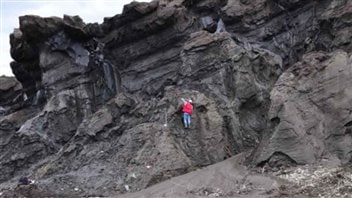
(ca. 30,000 years old), Klondike area, Yukon. These sediments
include well-preserved DNA from prehistoric plants and mammals,
and a diverse set of genes associated with antibiotic resistance.
© DG Froese, University of Alberta
It is known that DNA can survive long after the organism dies, even many thousands of years in the right conditions. However these are almost never complete but rather as short broken pieces of the chromosome. Sometimes though enough pieces can be assembled to recreate the complete genome.
Previously, the limit for being able to find enough DNA bits and pieces to recreate a genome was thought to be about 70,000 years. This discovery of ancient horse bones by Duane Froese and his team has led to a major reassessment of previously held beliefs.
The horse bones which were found in permafrost in the Yukon and Klondike were, determined to be about 700-thousand years old and were so well preserved by the permafrost that, combined with recent technology, they were able to sequence the genome and develop new information about horse evolution.
Duane Froese is a professor of Geology in Earth and Atmospheric Sciences at the University of Alberta and Canada Research Chair in Northern Environmental Change
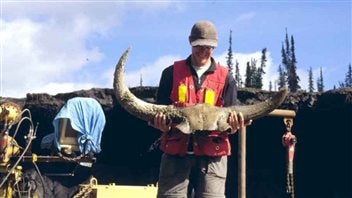
site in Klondike area Yukon. This skull dates to about 30,000 years
before present. © DG Froese, University of Alberta
When the bones were first discovered, the large size was of immediate interest as was the excellent state of preservation. Usually ancient horse fossils from the unglaciated areas of the Yukon, Alaska and Siberia date to the last 100-thousand years, and show much smaller animals. Dr Froese has seen bones of much larger horses at geologically older sites, but because these had lain frozen in the permafrost for hundreds of thousand of years, they were in far better condition.
Because of the low-moisture, low oxygen level of the permafrost where they had lain, the bones had not become fossilized, theDNA had not been completely destroyed, and even collogen was present.
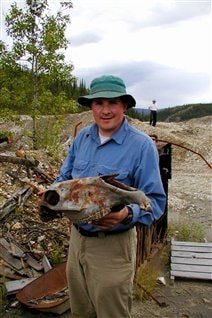
with ancient horse skull
© University of Alberta
By sequencing this ancient horse genome and comparing it with those of a 43,000 year old horse genome, several modern horses and a donkey, they have now revised previously held beliefs about when horse species split into various branches of zebras, horses, and donkey. The new information pushes back the split in time to almost double at 4 to 4.5 million years ago.
The new research also shows that there have been major fluctuations in horse populations in conjunction with climatic changes, including major losses in diversity.
The new genome work also is good news for those who have been preserving the Przewalski’s Horse of the Mongolian steppe. Discovered by western researchers in the latter half of the 19th century, the evolutionary origin of this horse, that shows striking physical differences compared to domesticated horses, as well as an extra-pair of chromosomes, remained a mystery. The new effort shows this species was isolated from modern horses about 50,000 years ago. There had long been concerns that the horse had however been mixing with domestic horses. The genome shows there are pure strains of the species and is worthy of the conservation efforts.
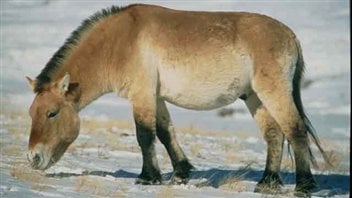
horse from the Mongolian steppe, are the last true wild horse
populations and split from the line that includes modern
horses nearly 50,000 years ago.
© R. Reading Denver Zoological Foundation.
Dr Froese notes that as technology advances more and better genetic data will become available leading to a better understanding of what drives evolution and the roles of things like climate change.
The report on the findings will be published in the July 4 edition of the scientific journal, Nature.
U of Alberta, Duane Froese page
CANQUA-CGRG Edmonton Aug 18-22, 2013
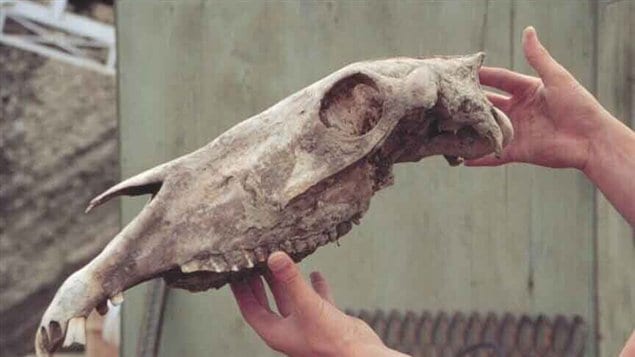






For reasons beyond our control, and for an undetermined period of time, our comment section is now closed. However, our social networks remain open to your contributions.